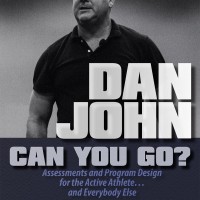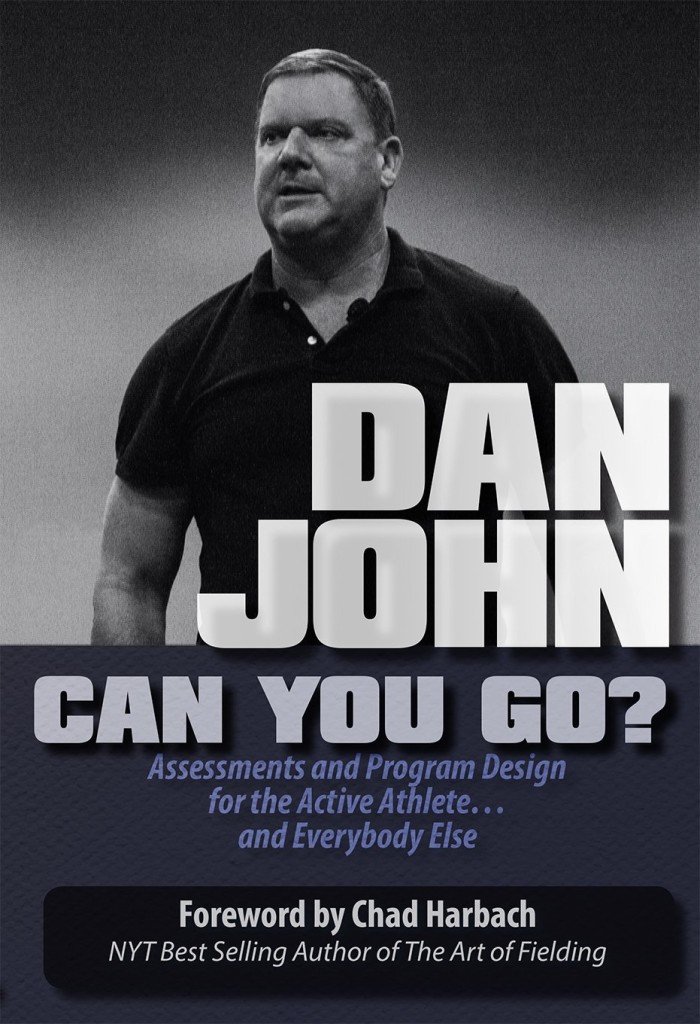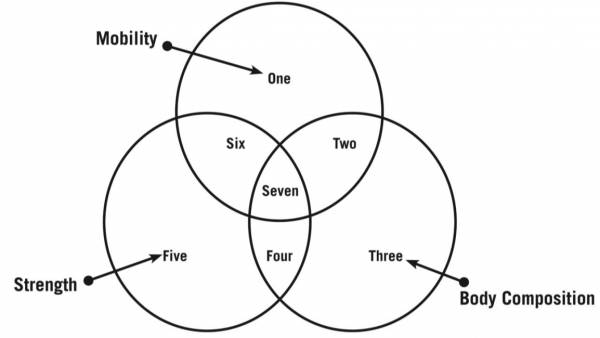
Dan John: Can You Go? Book Review
Dan John has a talent for making complex subject matters simple. Whether it’s coaching cues (Squat between your legs), categorizing movement (push, pull, hinge, squat, loaded carry), or clarifying questions (Prisoners Dilemma) he knows how to get at what matters.
“If, for whatever reason, you were only allowed three 15-minute sessions a week, what would you do? What this question asks an answers is what you consider the core, the fundamentals, of the path to the goal.” – The Prisoners Dilemma
Dan John’s new book, “Can You Go?: Assessments and Program Design for the Active Athlete and Everybody Else” is no different – it provides overlooked yet fundamental assessments and program design strategies for the coach overwhelmed with information.
1-2-3-4 Assessment
The 1-2-3-4 Assessment looks at factors related to three qualities – joint mobility, body composition and strength. One of the assessments is a sit to stand test, which actually has a correlation with life expectancy. Older populations that are unable to perform this test are at a greater risk for falling and fracturing a hip.
Athletes of all ages can benefit from spending more time on the ground and transitioning to and from the ground with exercises like Turkish Getups, rolling, crawling patterns, and the exercises that Dan John outlines in this book.
“One of the things I’ve realized is that many Americans literally spend no time on the ground. So, I came up with a little teaching drills that masquerades as a cardiovascular workout for some and a mobility workout for others. It’s called “Get Back Ups” or GBUps.” – Dan John
The sit to stand and other assessments in the book help to clarify what the trainee needs to focus on (mobility, body composition, strength) and provides a template with seven categories for program design. For example, a ONE needs mobility, a THREE needs better body composition, and a FIVE needs strength. The Five Tools listed below can then be used in correct combination for each of the seven types.
The Five Tools
Nutrition and caloric restriction
Inefficient exercise
Strength training
Hypertrophy and mobility training
Mental set
7 Categories of Training Focus
1’s: Need hypertrophy and mobility (goblet squats/hip-flexor stretches)
2’s: Need nutrition and inefficient exercises (exercises they struggle with)
3’s: Eat less, move more (prep more food, train alone less often)
4’s: Strength/body compo (many women) – combine kettlebell/barbell work
5’s: Focus on fundamentals with appropriate reps/sets
6’s: Mix mobility and strength work, explore Olympic lifts
7’s: Train the mind, focus on small habits
Aside from the assessments and seven categories here are two other major take-aways I enjoyed. I highly recommend this book for athletes and coaches.
Three Essential Mobility Drills
#1: Stretch the Hip-Flexors
#2: Mobilize the Thoracic Spine
#3: Train Rotary Stability (bird-dog, rolling patterns)
The Coach’s Ten Commandments for Keeping the Goal the Goal
#1: Train appropriately for the goal.
#2: Train little and often over the long haul.
#3: The longer it takes to get in shape, the longer the shape will remain.
#4: Warmups and cooldowns really do play important roles.
#5: Train for volume before intensity.
#6: Cycle the workouts.
#7: Train in a community.
#8: Train the mind.
#9: Keep the training program in perspective.
#10: Fundamentals trump everything else.
– Kevin Kula, “The Flexibility Coach” – Creator of FlexibilityRx™ – www.FlexibilityRx.com
Related Resources
Stop Chasing Pain Podcast – Dan John: Can You Go? (link)
Can You Go?: Assessments and Program Design for the Active Athlete (link)
Dan John Website (link)
Sitting-Rising Test (link)
Tags: Can You Go?, Dan John, get-back-ups, sitting-rising test


Leave A Reply (No comments so far)
You must be logged in to post a comment.
No comments yet